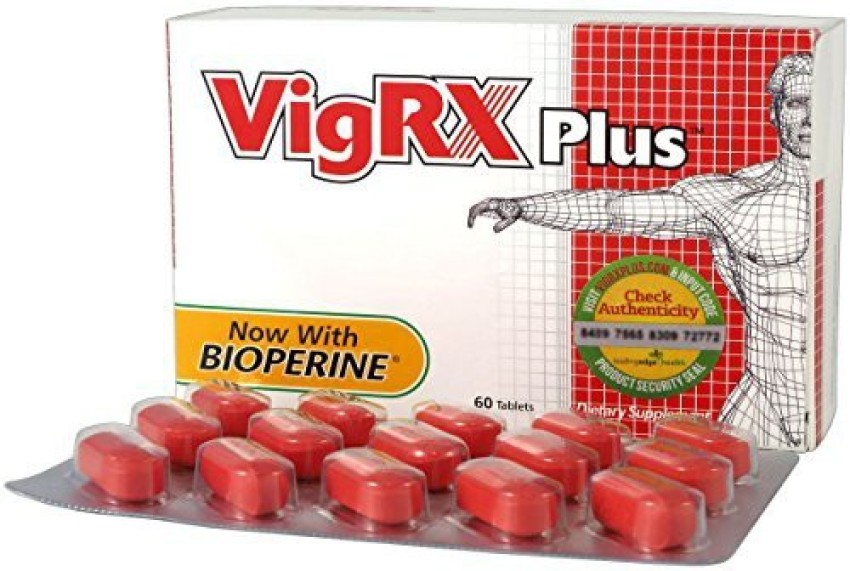The Importance of Physical Fitness
Physical fitness plays a crucial role in leading a healthy and fulfilling life. It refers to the ability to perform daily tasks with vigor and alertness without experiencing excessive fatigue. Regular exercise is key to achieving and maintaining physical fitness, and it encompasses various components such as cardiovascular endurance, muscular strength, flexibility, and body composition.
Understanding Exercise and Physical Activity
Exercise and physical activity are often used interchangeably, but they have distinct meanings. Physical activity refers to any bodily movement produced by skeletal muscles that requires energy expenditure. On the other hand, exercise is a subcategory of physical activity that is planned, structured, repetitive, and aims to improve or maintain physical fitness.
The Benefits of Exercise for Physical Health
Regular exercise is essential for maintaining optimal health and fitness levels. It not only helps in weight management but also promotes cardiovascular health, strengthens muscles and bones, and improves mental well-being. In this article, we will explore the benefits of exercise and physical activity, providing you with valuable insights on how to incorporate exercise into your daily routine and boost your overall health and fitness.
Increased Strength and Endurance
Regular exercise helps build muscle strength and endurance. By engaging in activities such as weightlifting, resistance training, or bodyweight exercises, you can increase your muscle mass and improve your overall strength and endurance.
Weight Management
Exercise plays a vital role in weight management. It helps burn calories, increase metabolism, and build lean muscle mass, which can contribute to weight loss or maintenance.
Improved Cardiovascular Health
Engaging in aerobic exercises such as running, swimming, or cycling improves cardiovascular health. It strengthens the heart, increases lung capacity, and enhances blood circulation, reducing the risk of cardiovascular diseases.
Enhanced Immune Function
Regular exercise boosts the immune system, reducing the risk of common illnesses such as colds and flu. It promotes the circulation of immune cells, making them more efficient in detecting and fighting off pathogens.
Reduced Risk of Chronic Diseases
Exercise can significantly reduce the risk of chronic diseases such as heart disease, type 2 diabetes, and certain types of cancer. It helps control blood pressure, cholesterol levels, and blood sugar levels, thereby improving overall health.
The Role of Exercise in Mental and Emotional Well-being
Stress Relief and Mood Enhancement
Exercise is a natural stress reliever and mood enhancer. Physical fitness exercise stimulates the production of endorphins, which are known as "feel-good" hormones, promoting a sense of well-being and reducing symptoms of anxiety and depression.
Improved Cognitive Function
Regular exercise has been linked to improved cognitive function, memory, and attention span. It increases blood flow to the brain, promoting the growth of new neurons and enhancing brain health.
Boosted Self-Esteem and Confidence
Engaging in regular exercise can boost self-esteem and confidence. Achieving fitness goals, improving physical appearance, and experiencing the benefits of an active lifestyle contribute to a positive self-image.
Better Sleep Quality
Exercise has a positive impact on sleep quality. Regular physical activity helps regulate sleep patterns, promotes relaxation, and reduces the risk of sleep disorders such as insomnia.
Finding the Right Exercise Routine for You
When incorporating exercise into your lifestyle, it's essential to find a routine that suits your preferences, goals, and physical capabilities. Here are some tips to help you find the right exercise routine:
Setting Realistic Goals
Set specific, measurable, achievable, relevant, and time-bound (SMART) goals that align with your fitness aspirations. This will help you stay motivated and track your progress effectively.
Choosing Activities You Enjoy
Find activities that you genuinely enjoy. Whether it's dancing, hiking, swimming, or playing a sport, engaging in activities you find enjoyable increases the likelihood of sticking to your exercise routine.
Incorporating Variety
Include a variety of exercises in your routine to prevent boredom and target different muscle groups. Mixing cardio, strength training, and flexibility exercises can provide a well-rounded approach to fitness.
Listening to Your Body
Pay attention to your body's signals and adjust your exercise routine accordingly. It's essential to strike a balance between pushing your limits and avoiding overexertion to prevent injuries.
Tips for Incorporating Exercise into Your Daily Routine
Making exercise a part of your daily routine can greatly enhance your overall health and fitness. Here are some tips to help you incorporate exercise into your daily life:
Prioritizing Physical Activity
Make physical activity a priority by scheduling it into your daily routine. Treat it as an essential appointment that cannot be missed.
Making It a Habit
Consistency is key when it comes to exercise. Make it a habit by starting with small, manageable steps and gradually increasing the duration and intensity of your workouts.
Finding Accountability and Support
Find an exercise partner or join a fitness community to stay motivated and accountable. Having someone to share your fitness journey with can make the experience more enjoyable and encourage long-term adherence.
Overcoming Barriers and Challenges
Identify and address any barriers or challenges that may hinder your exercise routine. Whether it's lack of time, access to facilities, or physical limitations, there are often solutions or alternatives available.
The Relationship between Exercise and Healthy Eating
Exercise and healthy eating go hand in hand when it comes to achieving optimal health and fitness. Here's how exercise and nutrition are interconnected:
Fueling Your Body for Optimal Performance
Proper nutrition provides the fuel your body needs to perform at its best during exercise. A well-balanced diet that includes carbohydrates, proteins, healthy fats, vitamins, and minerals supports energy production and aids in muscle recovery.
The Importance of Balanced Nutrition
Exercise alone cannot compensate for an unhealthy diet. It's crucial to maintain a balanced and nutritious diet that supports your fitness goals and provides the necessary nutrients for overall health.
Hydration and Exercise
Staying hydrated is essential for exercise physical performance and overall well-being. Adequate water intake helps regulate body temperature, lubricate joints, transport nutrients, and remove waste products.
Exercise and Aging: Maintaining Health and Mobility
Regular exercise is particularly important as we age. It helps maintain physical health, mobility, and independence. Here's how exercise benefits older adults:
Age-Related Changes and Exercise
As we age, our bodies undergo various changes, including muscle loss, decreased bone density, and reduced flexibility. Exercise can help counteract these changes, maintain muscle strength, improve bone health, and enhance flexibility.
The Role of Exercise in Preventing Age-Related Conditions
Regular physical activity reduces the risk of age-related conditions such as osteoporosis, heart disease, diabetes, and cognitive decline. It improves cardiovascular health, blood sugar control, and cognitive function.
Exercise for Maintaining Mobility and Independence
Engaging in exercises that focus on strength, balance, and flexibility helps older adults maintain mobility and independence. It reduces the risk of falls, improves coordination, and enhances overall functional abilities.
Exercising Safely: Injury Prevention and Proper Technique
To ensure a safe and effective exercise routine, it's crucial to prioritize injury prevention and use proper technique. Here are some essential safety tips:
Warming Up and Cooling Down
Always warm up before starting your exercise routine to prepare your muscles and joints for activity. Similarly, cool down and stretch afterward to aid in recovery and prevent muscle soreness.
Using Correct Form and Technique
Proper form and technique are essential for maximizing the benefits of exercise and minimizing the risk of injury. Seek guidance from fitness professionals or trainers to learn the correct form for different exercises.
Listening to Your Body and Resting When Needed
Pay attention to your body's signals during exercise. If you experience pain, dizziness, or extreme fatigue, it's important to listen to your body and rest when needed. Pushing through excessive fatigue or pain can lead to injuries.
The Power of Accountability: Exercise Partners and Communities
Having accountability and support can greatly enhance your exercise journey. Here's how exercise partners and communities can make a difference:
The Benefits of Exercising with Others
Exercising with a partner or in a group setting provides motivation, encouragement, and friendly competition. It can make workouts more enjoyable and increase adherence to an exercise routine.
Joining Fitness Classes or Groups
Consider joining fitness classes or groups that align with your interests and fitness goals. Whether it's yoga, dance, martial arts, or group fitness classes, the camaraderie and social aspect can enhance your exercise experience.
Virtual Fitness Communities
In today's digital age, virtual fitness communities offer support, guidance, and accountability. Online platforms and apps provide access to workout routines, virtual trainers, and communities of like-minded individuals.
Overcoming Exercise Plateaus and Staying Motivated
It's common to hit exercise plateaus or experience a lack of motivation along your fitness journey. Here's how to overcome these challenges:
Setting New Challenges and Goals
Continuously challenge yourself by setting new fitness goals. Whether it's running a longer distance, lifting heavier weights, or mastering a new exercise technique, striving for progress keeps motivation alive.
Trying New Activities
Exploring new activities or exercise modalities can reignite your passion for fitness. Trying something different, such as rock climbing, kickboxing, or aerial yoga, can provide a fresh perspective and keep workouts exciting.
Seeking Professional Guidance
If you're feeling stuck or unsure about your exercise routine, consider seeking professional guidance from fitness trainers or coaches. They can provide personalized advice, create tailored workout plans, and offer valuable insights.
Exercise and Children: Fostering Healthy Habits from an Early Age
Encouraging children to engage in regular exercise sets the foundation for a healthy and active lifestyle. Here's why exercise is essential for children:
The Importance of Physical Activity for Children
Regular physical activity is crucial for children's growth, development, and overall well-being. It promotes healthy growth, improves motor skills, enhances bone and muscle health, and helps maintain a healthy weight.
Fun and Engaging Exercise Options for Kids
Make exercise fun and engaging for children by incorporating activities they enjoy. Whether it's playing outdoor games, swimming, dancing, or participating in sports, finding activities that capture their interest encourages long-term adherence.
Encouraging Active Lifestyles as Parents and Guardians
As parents and guardians, it's important to lead by example and promote active lifestyles within the family. Engage in physical activities together, limit screen time, and prioritize outdoor play to instill healthy habits from an early age.
Exercise and Workplace Wellness
With sedentary jobs becoming increasingly common, incorporating exercise into the workplace is essential for employee well-being. Here's why workplace wellness matters:
The Impact of Sedentary Lifestyles
Sedentary lifestyles, characterized by prolonged sitting or minimal physical activity, can have detrimental effects on health. It increases the risk of obesity, cardiovascular diseases, musculoskeletal issues, and mental health problems.
Incorporating Physical Activity at Work
Employers can promote workplace wellness by incorporating physical activity initiatives. This can include standing or walking meetings, encouraging breaks for stretching or short walks, providing access to health fitness facilities, or organizing workplace fitness challenges.
Promoting a Culture of Health and Wellness
Creating a culture of health and wellness within the workplace encourages employees to prioritize their well-being. This can involve offering wellness programs, providing resources for healthy living, and promoting work-life balance.










 English (US) ·
English (US) ·